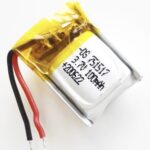USB drives and SD cards are essential for data storage and transfer. However, users sometimes encounter frustrating issues like drives not being recognized, write protection errors, or slow file transfers. While software glitches or drive corruption are often suspected, a simple hardware component – the adapter – might be the unexpected source of your woes.
Many users utilize adapters to connect microSD cards to standard USB ports or SD card slots on their computers. These adapters, while convenient, are not immune to failure. Like any piece of hardware, they can degrade over time or be faulty from the outset. A malfunctioning adapter can lead to a variety of problems that mimic software-related issues, making diagnosis tricky.
One common problem reported is the dreaded “write protection” error. Imagine trying to copy files to your SD card, only to be met with a persistent message stating the disk is write-protected. You might instinctively check for software locks or file system errors. However, the issue could be as simple as a failing adapter. In some cases, the adapter might not be properly communicating with the computer, leading to misinterpretations of the card’s status and resulting in write protection errors.
If you’re facing difficulties with your USB drive or SD card, especially write protection issues, consider the adapter as a potential point of failure. A quick and easy troubleshooting step is to try a different adapter, if available. As illustrated in one user’s experience, simply switching to a different SD card adapter resolved a persistent write protection error. This suggests that the original adapter was indeed faulty and hindering proper communication with the memory card.
While swapping adapters can sometimes be a surprisingly effective fix, it’s also crucial to consider other potential causes and solutions, especially if changing the adapter doesn’t resolve the problem. For instance, while not directly related to adapter malfunction, performing a virus scan of your USB drive can be a good practice, particularly if you suspect the drive has been used on multiple devices. While you can’t directly perform a “Cara Scan Flashdisk Online” in the sense of uploading the entire drive to a website, many reputable antivirus vendors offer online tools to scan individual files for malware, or you can utilize desktop antivirus software to thoroughly scan the connected drive. Checking for and removing any potential malware can rule out virus-induced write protection or drive malfunction.
Beyond virus scans and adapter checks, other troubleshooting steps for USB drive issues include:
- Checking the USB port: Ensure the port itself is functioning correctly by trying other USB devices.
- Updating drivers: Outdated or corrupted USB drivers can sometimes cause connectivity problems.
- Formatting the drive: As a last resort, formatting the drive can resolve file system errors, but remember this will erase all data on the drive, so backup important files beforehand if possible.
In conclusion, when encountering issues with your USB drives or SD cards, don’t immediately jump to complex software solutions. Consider the simpler hardware aspects, particularly the adapter if you are using one. A faulty adapter can be an easily overlooked culprit behind various problems, including write protection errors. By systematically checking the adapter and considering other basic troubleshooting steps like virus scanning, you can often resolve the issue efficiently and get your storage devices working smoothly again.

